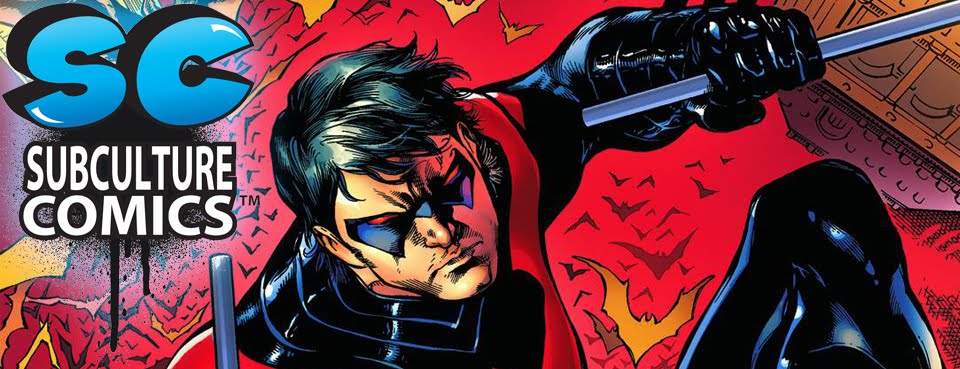Original or Reprint: Analysis of Action Comics #1
June 21, 2013 • by Troy Dove • Subculture Comics
 |
| Original Action Comics #1 from 1938. |
Considered the Holy Grail of Golden Age comics, comic book collectors
can spot the cover of Action Comics #1 from across a crowded room. But, while
most serious collectors can easy distinguish an original issue from the
multitude of reprints issued over the past 75 years, every once and a while you
still hear of a collector purchasing an ‘original’ issue, only to find out that
it is actually a vintage reprint. While a
few reprints do have some value in the collector market, it is nowhere near the
value of an original issue.
The original 1938 issue of Action Comics #1, was 68 pages in
length and featured an array of characters starring in a multiple original
stories. Superman was the first story in the book, and was only about 12 pages in
length, the remainder of the book featured characters such as Chuck Dawson,
Zatara Master Magician, Pep Morgan, and Tex Thompson. (Most reprints focus only
on the original Superman story and are therefore only about 12-16 pages in
length, so they are easy to distinguish from the original 68-page issue.)
The most common reprint that is mistaken for an original issue
is the 1978 DC Comics reprint entitled Famous 1st Edition, which
is a page-by-page reprint of the original. Throughout the 1970s DC published a
series of famous golden age comics under the Famous 1st Edition
title, not just Action Comics.
While DC intended for the Famous 1st Edition release
of Action Comics #1 to be an exact reproduction of the original, there are
a few differences that make it easily distinguishable from the 1938 issue.
Listed below is a quick guide to help distinguish between the 1978 Famous 1st Edition reprint and the original issue from 1938.
1. All DC Comics’
Famous 1st Edition
reprints were originally sold with two covers, an outer and an inner cover. The
outer cover clearly stated that it was an issue from the
Famous 1st Edition reprint series. Underneath the outer cover was an inner cover, which
was a replica of the 1938 original. Often, the
Famous 1st Edition reprint
issue is found without the external cover, making it appear more like an
original issue.
 |
| The 1978 reprint of Action Comics #1 as part of DC Comics' Famous 1st Edition series. The outer cover (left) clearly indicates the issue is a reprint, but with the outer cover removed, the inner cover (right) can be deceiving. |
2. The outer cover of the 1978 reprint was printed
on heavy paper stock which was held together with three staples on the spine (the
original 1938 issue had only two staples).
3. If the outer cover of the
Famous 1st Edition has been removed, it will very closely resemble the original 1938
issue, but a quick way to distinguish between the two is that the 1978 reprint
was issued on ‘slick’ paper and the 1938 original was issued on standard matte
paper.
4. The slick paper cover of the reprint is also
missing a few art elements that appear on the original 1938 issue (see below).
 |
| The Famous 1st Edition reprint from 1978 (lower panel) is missing art elements that appeared on the original 1938 cover (upper panel). 1. The broken stones from the front of the crushed car (A); 2. Highlights on the car's fender (B); 3. The two beads of sweat off the brow of from the man in the foreground. |
5. The 1978 reprint was also slightly oversized
from the original issue, measuring 10” x 13.5” whereas the original measured
7.25” x 10.25”.
6. Finally, the back cover of the original 1938
issue had an advertisement for Johnson Smith Company, the 1978 reprint does
not.
While this quick guide is not meant to be all-inclusive, it
should help collectors easily distinguish between the 1978 Famous 1st Edition reprint of Action Comics #1, and the original issue from 1938.










